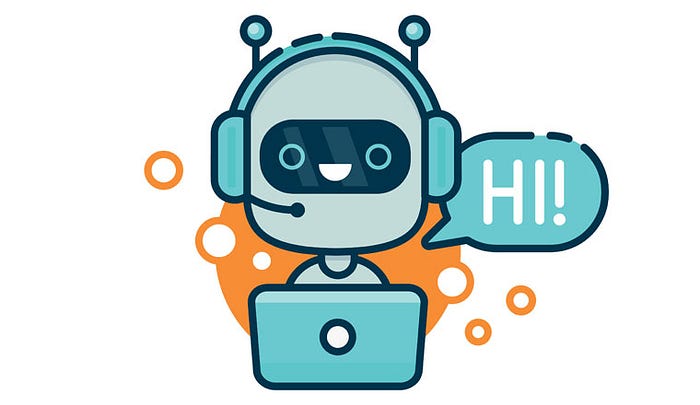Using Python and TensorFlow to Build a Basic Chatbot

Chatbots are becoming increasingly popular as a way for businesses to interact with their customers. Chatbots can provide customer support, answer questions, and even make appointments. One way to create a chatbot is to use a neural network, which can be trained to recognize patterns in user input and generate appropriate responses.
In this tutorial, we’ll use Python and the TensorFlow library to build a basic chatbot using a neural network. Here are the steps:
Install Python and TensorFlow: Before you begin, make sure you have Python and TensorFlow installed on your machine. You can download Python from the official website, and install TensorFlow using pip.
Prepare the data: To train our neural network, we need a dataset of questions and answers. You can use any dataset you like, or create your own. For this tutorial, we’ll use a dataset of movie-related questions and answers, which you can download from this link: https://www.cs.cornell.edu/~cristian/Cornell_Movie-Dialogs_Corpus.html
Preprocess the data: Once you have your dataset, you need to preprocess it so that it can be used by the neural network. In our case, we’ll convert the questions and answers into numerical vectors using word embeddings. We’ll use the pre-trained GloVe word embeddings, which you can download from this link: https://nlp.stanford.edu/projects/glove/
Build the neural network: Now it’s time to build the neural network. We’ll use a simple sequence-to-sequence model with an encoder and decoder. The encoder will take in the user’s input and convert it into a fixed-length vector, and the decoder will use that vector to generate a response. Here’s the code for the neural network:
import tensorflow as tf
from tensorflow.keras.layers import Input, LSTM, Dense
from tensorflow.keras.models import Model
# Define the input sequence
encoder_inputs = Input(shape=(None, num_encoder_tokens))
encoder_lstm = LSTM(latent_dim, return_state=True)
encoder_outputs, state_h, state_c = encoder_lstm(encoder_inputs)
encoder_states = [state_h, state_c]
# Define the decoder sequence
decoder_inputs = Input(shape=(None, num_decoder_tokens))
decoder_lstm = LSTM(latent_dim, return_sequences=True, return_state=True)
decoder_outputs, _, _ = decoder_lstm(decoder_inputs, initial_state=encoder_states)
decoder_dense = Dense(num_decoder_tokens, activation='softmax')
decoder_outputs = decoder_dense(decoder_outputs)
# Define the model
model = Model([encoder_inputs, decoder_inputs], decoder_outputs)
# Compile the model
model.compile(optimizer='rmsprop', loss='categorical_crossentropy')
Train the neural network: Once we have our neural network defined, we can train it using the preprocessed dataset. Here’s the code to train the model:
model.fit([encoder_input_data, decoder_input_data], decoder_target_data,
batch_size=batch_size,
epochs=epochs,
validation_split=0.2)
Test the chatbot: Once the model is trained, we can use it to generate responses to user input. Here’s the code to generate a response:
def generate_response(input_text):
# Convert the input text into a numerical vector using word embeddings
encoder_input = encode_input(input_text)
# Generate the initial state of the decoder
decoder_state = model.predict([encoder_input, np.zeros((1, 1, num_decoder_tokens))])
# Start the decoder with the start token
target_seq = np.zeros((1, 1, num_decoder_tokens))
target_seq = [0, target_token_index['<START>']]] = 1
# Generate the response one token at a time
response = ''
for i in range(max_decoder_seq_length):
output_tokens, state_h, state_c = decoder_lstm(target_seq, initial_state=decoder_state)
decoder_state = [state_h, state_c]
output_token = np.argmax(output_tokens[0, -1, :])
if output_token == target_token_index['<END>']:
break
response += reverse_target_token_index[output_token]
target_seq = np.zeros((1, 1, num_decoder_tokens))
target_seq[0, 0, output_token] = 1.
return response
To use this function, simply pass in a string of user input, and it will generate a response.
And that’s it! You now have a basic chatbot that uses a neural network to generate responses. Of course, this is just the beginning — you can add more layers to the neural network, use a different dataset, or try different preprocessing techniques to improve the chatbot’s performance.
Lyron Foster is a Hawai’i based African American Author, Musician, Actor, Blogger, Philanthropist and Multinational Serial Tech Entrepreneur.

